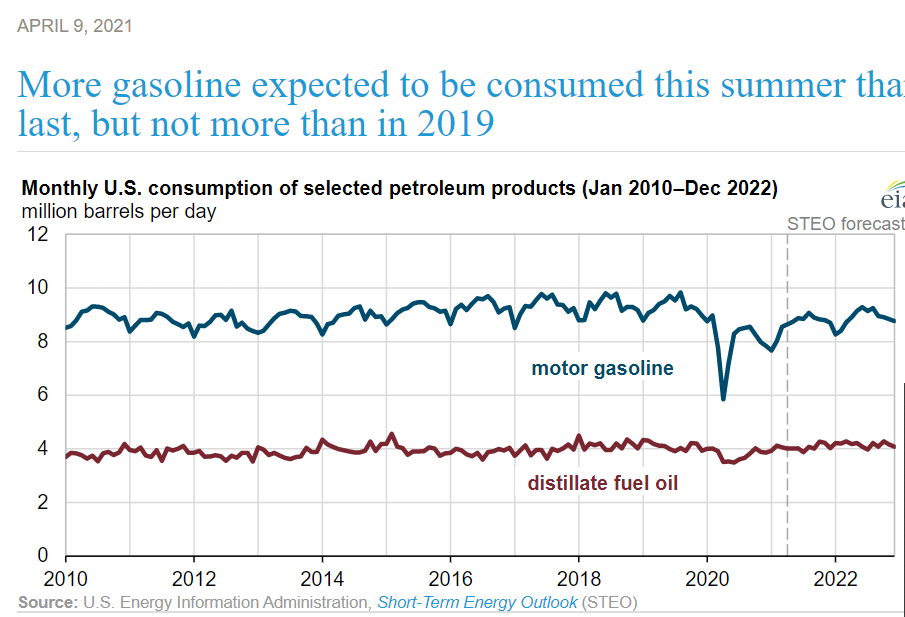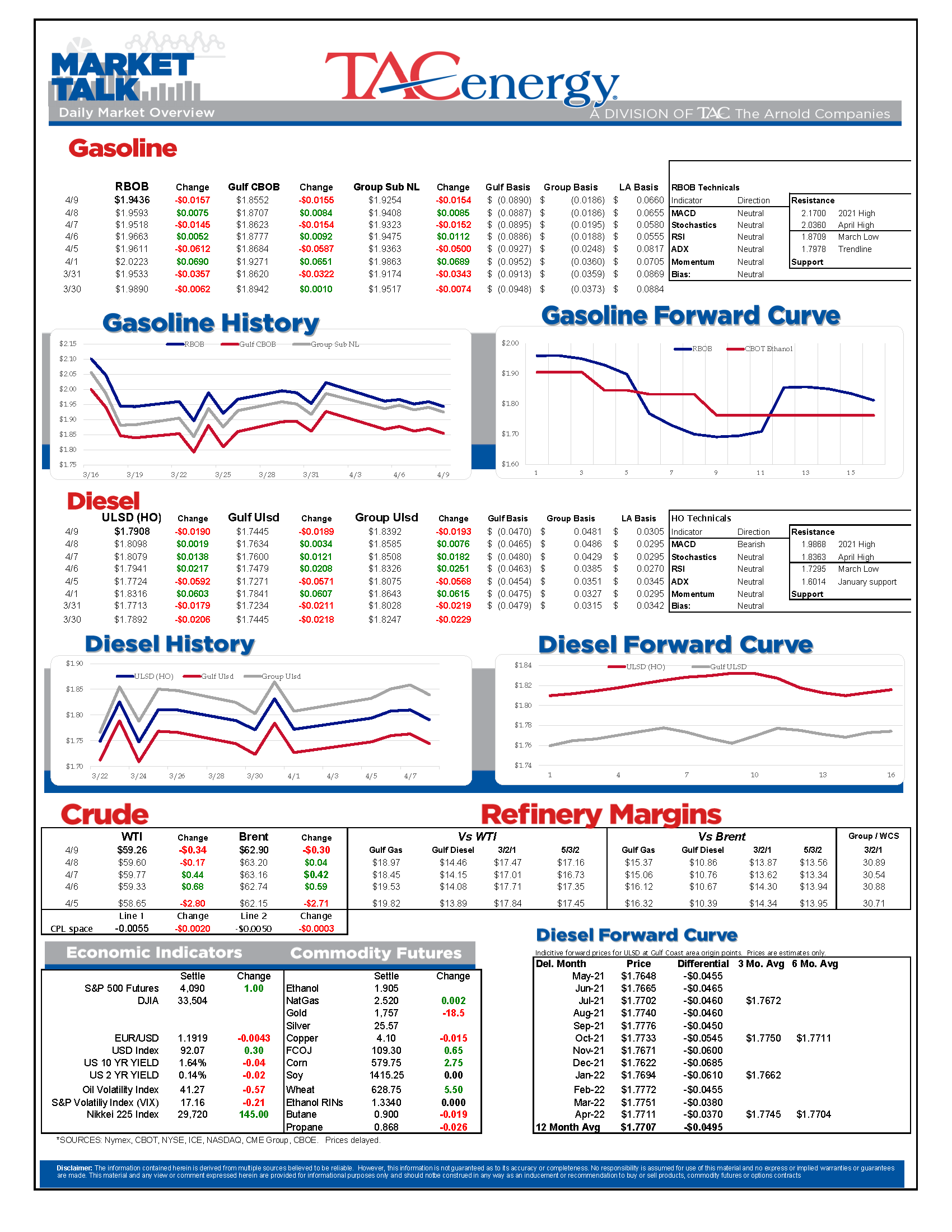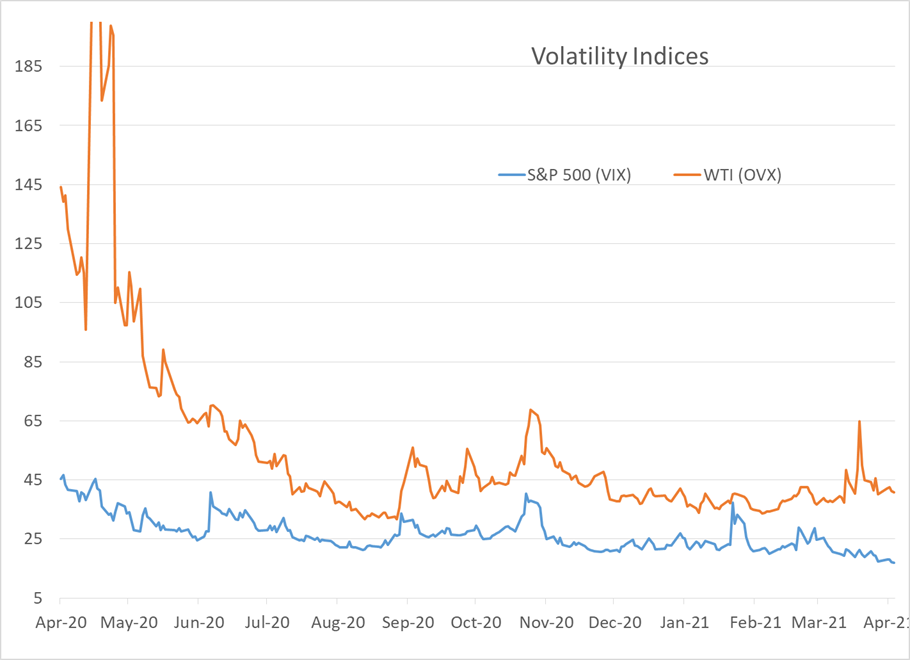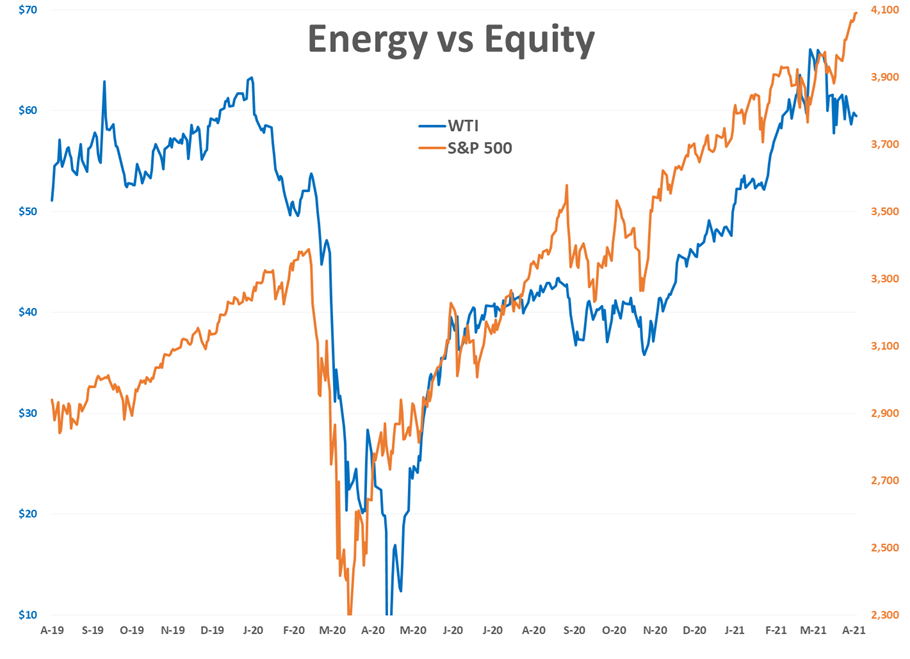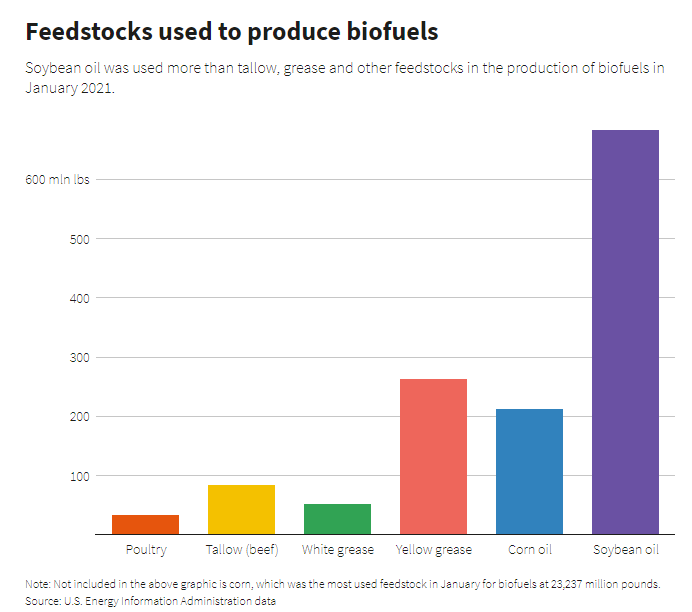Too Many Imports?

Energy prices appear to be calming after a spike in volatility over the past few weeks, and are starting off Friday’s session with modest losses. Prices remain in their sideways trading range, which means we’re likely to continue seeing back and forth action until a new trend develops.
U.S. equity markets meanwhile are having no problem finding direction, hitting fresh record highs this week, cheered on by signs that the economy continues to reopen even as pockets of the country deal with new COVID outbreaks, and in no small part to the $6 trillion or so in monetary and fiscal stimulus provided by the FED and Congress over the past year.
Too many imports? While most cash markets for gasoline have held relatively steady this week, basis values for NYH RBOB have dropped eight cents this week as it appears there’s too much higher RVP gasoline in the region just one week before trading switches over to the summer-grade products. There was a record surge in gasoline imports following the great refinery shutdown in February, and the Buckeye pipeline disruption in March, and this selloff suggests perhaps some suppliers are worried they brought in too much fuel from overseas and won’t be able to turn their tanks in time.
The EIA this morning is highlighting its STEO gasoline demand forecast that suggests consumption will be notably better than last summer, but still behind 2019.
It’s hard to read anything about the energy markets without a renewable component being factored in. A Reuters article this morning highlights the looming shortage of feedstocks for bio-based fuels as producers rush to take advantage of the lofty incentives available from the various federal and state programs that provide more than $5/gallon for some products depending on where they’re sold.
Another refinery casualty? Exxon announced Thursday it was considering shutting down its plant in Norway due to the overcapacity of refining in Europe.
Click here to download a PDF of today's TACenergy Market Talk.
News & Views
View All
Energy Futures Are Caught Up In Headline Tug-O-War This Morning
Energy futures are caught up in headline tug-o-war this morning with Canadian oil production concerns and a positive US GDP report trying to push prices higher while sinking Chinese demand worries and Gaza ceasefire hopes are applying downward pressure. The latter two seem to be favored more so far this morning with WTI and Brent crude oil futures down ~45 cents per barrel, while gasoline and diesel prices are down about half a cent and two cents, respectively.
No news is good news? Chicago gasoline prices dropped nearly 30 cents yesterday, despite there not being any update on Exxon’s Joliet refinery after further damage was discovered Wednesday. Its tough to say if traders have realized the supply situation isn’t as bad as originally thought or if this historically volatile market is just being itself (aka ‘Chicago being Chicago’).
The rain isn’t letting up along the Texas Gulf Coast today and is forecasted to carry on through the weekend. While much of the greater Houston area is under flood watch, only two refineries are within the (more serious) flood warning area: Marathon’s Galveston Bay and Valero’s Texas City refineries. However, notification that more work is needed at Phillip’s 66 Borger refinery (up in the panhandle) is the only filing we’ve seen come through the TECQ, so far.
Premiums over the tariff on Colonial’s Line 1 (aka linespace value) returned to zero yesterday, and actually traded in the negatives, after its extended run of positive values atypical of this time of year. Line 1’s counterpart, Line 2, which carries distillates from Houston to Greensboro NC, has traded at a discount so far this year, due to the healthy, if not over-, supply of diesel along the eastern seaboard.
Click here to download a PDF of today's TACenergy Market Talk.

WTI And Brent Crude Oil Futures Are Trading ~$1.50 Per Barrel Lower In Pre-Market Trading
The across-the-board drawdown in national energy stockpiles, as reported by the Department of Energy yesterday, stoked bullish sentiment Wednesday and prompt month gasoline, diesel, and crude oil futures published gains on the day. Those gains are being given back this morning.
The surprise rate cut by the People’s Bank of China is being blamed for the selling we are seeing in energy markets this morning. While the interest rate drop in both short- and medium-term loans won’t likely affect energy prices outright, the concern lies in the overall economic health of the world’s second largest economy and crude oil consumer. Prompt month WTI and Brent crude oil futures are trading ~$1.50 per barrel lower in pre-market trading, gasoline and diesel are following suit, shaving off .0400-.0450 per gallon.
Chicagoland RBOB has maintained its 60-cent premium over New York prices through this morning and shows no sign of coming down any time soon. Quite the opposite in fact: the storm damage, which knocked Exxon Mobil’s Joliet refinery offline on 7/15, seems to be more extensive than initially thought, potentially extending the repair time and pushing back the expected return date.
There are three main refineries that feed the Chicago market, the impact from one of them shutting down abruptly can be seen in the charts derived from aforementioned data published by the DOE. Refinery throughput in PADD 2 dropped 183,000 barrels per day, driving gasoline stockpiles in the area down to a new 5-year seasonal low.
While it seems all is quiet on the Atlantic front (for now), America’s Refineryland is forecasted to receive non-stop rain and thunderstorms for the next four days. While it may not be as dramatic as a hurricane, flooding and power outages can shut down refineries, and cities for that matter, all the same, as we learned from Beryl.

